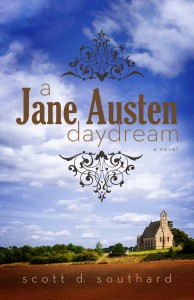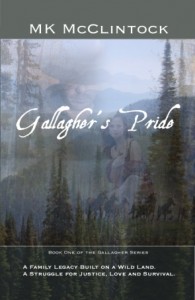Recently I was researching the changes in the publishing world (as I often do) and I found a fabulous article by award-winning author Scott D. Southard about his experiences with his literary agent. I begged him to allow me to share it with my regular readers. He has kindly obliged. So please help in giving Scott a warm welcome! Thank you for stopping by!-Danica Winters
What I Learned From Having a Literary Agent
Scott D. Southard
 This editorial originally appeared on “The Musings & Artful Blunders of Scott D. Southard.” Scott is the author of A JANE AUSTEN DAYDREAM, coming from Madison Street Publishing this April. You can learn more about the book here.
This editorial originally appeared on “The Musings & Artful Blunders of Scott D. Southard.” Scott is the author of A JANE AUSTEN DAYDREAM, coming from Madison Street Publishing this April. You can learn more about the book here.
-
For five years, my books were represented by a big agency out of New York City. While I don’t want to name any names, I think I can safely say that this agency has a long history and has been associated with such writers as Harper Lee, John Steinbeck, and John Irving. (Yeah, I have two degrees of separation between my books and Scout!) Their clients are a who’s who of writing over the last one hundred years and as a writer and literature buff I could not have been more thrilled.Thrilled? No, let me correct that.I bragged! I gloated! I patted myself on the back every chance I got! I was big man on literary campus and it was only a matter of time before everyone knew my name. Start preparing the Booker prize trophy now… Wait, do they do a trophy? Or is it a medal? I have no idea (if it’s just a certificate that would be lame).There is this wonderful Hollywood dream for artists that when someone of importance finds their work that suddenly everything is going to be streets of gold from then on and all the hard work is over. (Remember “The Standard Rich and Famous” contract in The Muppet Movie?) Well, I fell for that dream hook, line and sinker; and over the five years I was signed with this agency my career was stagnant.Those five years are never going to come back.
Trust… but do it in moderation
See, the fact is while we both (the agent and me) signed the contracts, it did not mean I was going to be on their front burner at all times (or even some of the times).I had no idea what the agent did every day; heck, no writer could know that! (But wouldn’t it be awesome if we could? They could have those monitoring cameras like some day cares have and we writers could log in online and see what our agent is doing now. Oh, look! They’re taking a lunch!)See, there is a level of trust that is created there out of a shared hope that your book could find success, but how much you want to trust is the question. And let me admit this, I was an idiot for quite a few of the years that I was with the agency.Why?Because I allowed myself to believe, to dream, that they were fighting for my books every hour; I had to be their 9-to-5, right? Naive. Naive. And even more naive, I allowed myself to imagine that I was just as important to them as their New York Times bestselling authors. The ones with the million dollar book deals and screaming fan bases. Yeah, I’ll say it again, I was an idiot.
It’s still your career
That is not to say I recommend not signing with an agency. That would be idiotic too! If an established agency (And I wrote here about what to look for with an agency because not all agencies are equal) wants to represent your book you should always jump onboard, that’s not a question. Heck, if an agency was to contact me I would sign as well again, even with this experience behind me. I just wouldn’t be as innocent as I was the last time.See, the big mistake I made is I turned off the marketing part of my brain and just focused on my writing for five years.What is that cliché about “assume?” Yeah, that was me.I didn’t enter writing contests, I didn’t start my blog (and, hello, thanks for reading!), etc. I didn’t do any of the things that I should have done. So when that day came and my agent and I parted ways (think of it as that beginning scene in Grease when Danny and Sandy go their separate ways after the summer… without the singing), I was back to square one.Wait! I was not just back at square one, I was negative five at least, because all of my contacts and the name recognition I was building in the writing community was gone.The fact is your writing career is always your writing career. Don’t ever forget that. It will never be another’s, never. It is only yours. Even if you have a big agent or publisher supporting you, it is still your career. At the heart of it is still you alone at a keyboard or with a notepad in your hand, don’t lose sight of that.In other words, don’t assume that anyone out there cares as much as you do for your work and your future. They don’t.Frankly, your agent is not your mother.
Communication is key
No one wants to be a nuisance. No one wants to be that kid after class each day bothering the teacher. Begging the mailman each does not make a package arrive any faster, and the same goes for agents.However, and I have said this before, we writers usually are introverts, and the idea of bothering anyone (especially someone that promised to make us rich and famous), is just too nerve-racking an idea to consider.What if I said something that ruined everything? What if I make them change their minds? Our creative minds will reel with horror possibilities that could all occur because of one simple phone call or e-mail.Take a breath.The fact is it is one simple phone call. That’s it… Or better yet, an e-mail. And agents are busy people. To keep the money rolling in they have numerous books in the wings to support and sell, so in a way opening that avenue of communication may actually help your book! Reminding them you are there and are waiting.So consider this, make yourself a calendar, (don’t share it with your agent!). How about e-mailing once every month to two months or so? Maybe even consider a phone call every three to four months?And when you do contact them, don’t be afraid to ask for an update. Ask for copies of responses or to hear what editors/publishers think. That paperwork, if they send it to you or share it with you, can be a helpful insight not only to what publishers/editors think of your work but also on how your agent it actually describing your work to publishers… But be prepared, if you do learn how your agent is describing your work don’t be surprised if you are shocked.(Example: I had my first agent when I was a teenager and that agent told publishers my collection of short stories was like a Judy Blume for the next generation… Yes, I said Judy Blume. Now I liked Judy Blume growing up! Who doesn’t, but when you are a 17-year old writer who is thinking that they are breaking some kind of literary ground with a collection of shorts stories about relationships and fantasy/science fiction, the last thing you want on your shoulders is Judy Blume!)
It’s a relationship
Writing a book, in my opinion, is only 10 percent of this gig. The rest is marketing or PR. It’s what we do to get an agent or a publisher, it’s what we do afterwards in trying to get people to buy our books (Hey, did you know about my new experimental book A Jane Austen Daydream? You see what I mean!). It’s all part of the job, and it is not usually something you learn about in creative writing courses.While agents are, and will always be, the gatekeepers to the big publishing houses; remember, they are only human too. They can forget, they can get things wrong and they can even break your heart.It’s a relationship and like all good relationships it is one you will have to work on. The second you sign with an agent, that agency begins to lose money. And they will continue to lose money until your book is sold.Take comfort in that fact that someone believes in you that much to take the risk, but remember, you are still part of the fight. Build that relationship, listen to their comments, make the changes that they may request in your work (if it makes sense, of course), but give-and-take throughout it. Just like dating you will know if something isn’t working, and you will also know when it does.For me?I still dream of Pulitzer and Booker, but I will always miss those five years.About Scott D. Southard: Scott D. Southard, the author of A JANE AUSTEN DAYDREAM (coming in April 2013 from Madison Street Publishing), swears he is not obsessed with Jane Austen. He is, however, also the author of the award-winning novels, MY PROBLEM WITH DOORS and MEGAN. Scott can be found on the internet via his writing blog "The Musings & Artful Blunders of Scott D. Southard” where he writes on topics ranging from writing, art, books, TV, writing, parenting, life, movies, and writing.
Scott D. Southard, the author of A JANE AUSTEN DAYDREAM (coming in April 2013 from Madison Street Publishing), swears he is not obsessed with Jane Austen. He is, however, also the author of the award-winning novels, MY PROBLEM WITH DOORS and MEGAN. Scott can be found on the internet via his writing blog "The Musings & Artful Blunders of Scott D. Southard” where he writes on topics ranging from writing, art, books, TV, writing, parenting, life, movies, and writing.







